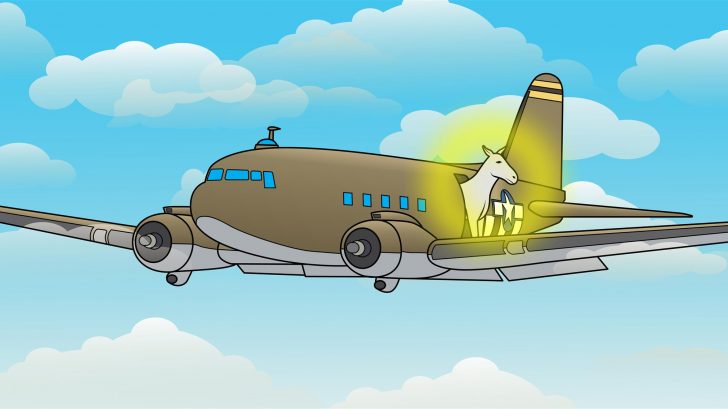Major-General Orde Wingate was a brilliant British officer who assembled a ragtag brigade of British and Burmese guerillas that gave Japanese forces pain in the ass.
His grand plan was to establish strongholds behind enemy lines. In order to achieve this, he came up with an unconventional way to transport his troops and supplies by using military gliders. This came to be known as Operation Thursday.
1. The Operation used C-47 planes to tow the military gliders.
Operation Thursday officially commenced in March 1944, with 26 C-47 planes comprising the first wave of transports.
The C-47 Skytrain had a maximum payload of 6,000 pounds. Despite this considerable limit, Wingate’s troops, supplies, and equipment were just too much that the planes exceeded their limits by a staggering 2,000 pounds.
The excess weight strained the C-47 planes. As a result, 8 out of the 26 C-47’s lost the gliders they were supposed to tow.
2. The C-47 Skytrains transported around 1,000 mules.
Aside from the mules, the Operation successfully carried 10,000 troops and more than 250 tons of supplies.
3. Glider casualties during the Operation’s early stages were relatively high.
This novel and untested strategy led to approximately 150 casualties. The first landing airstrip Broadway was vastly improved in order to receive transport and glider aircraft more efficiently.
Soon after, other six other airstrips were set up and they remained operational throughout the campaign’s conclusion in May 1944.
4. Wingate’s Guerilla forces were covered by P-51 Mustangs and B-25 Mitchells.
Right after the start of the Operation, the Japanese launched an offensive to destroy the 17th Indian Division in Imphal. These fine fighters and bombers constantly harrassed Japanese forces stationed in Burma by bombing crucial strategic transportation and communications infrastructure.
5. The C-47’s flew 95% of their missions at night.
The night excursions made the Operation Thursday way more dangerous, but it was the only way to remain beyond Japanese detection.
However, light planes such as the UC-64 were more impressive. They conducted 510 missions and moved more than 500,000 pounds of cargo in total.
This was a major factor in Operation Thursday’s remarkable ingenuity and rugged confidence – both qualities embodied by an extraordinary Military tactician.


